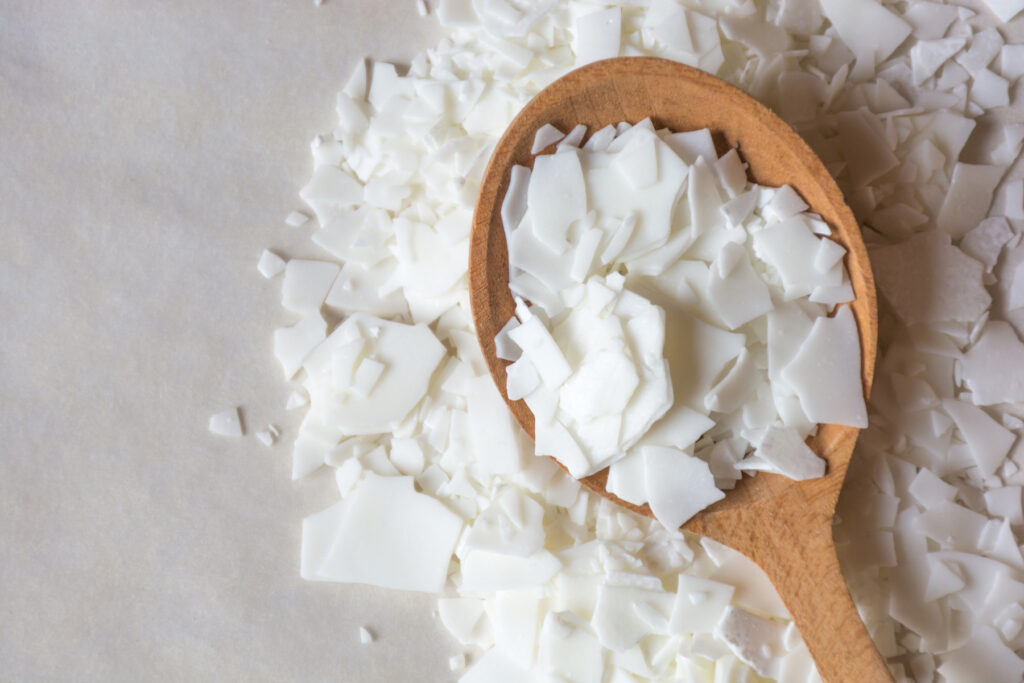
Candles have been a source of light, warmth, and ambiance for centuries. The type of wax used in a candle greatly influences its burn time, fragrance throw, and appearance. In this blog post, we will delve into the various types of candle waxes available in the market, discussing their characteristics, advantages, and best uses.
Soy Wax
Soy wax is a natural and renewable option, more environmentally friendly than paraffin. It’s made from soybean oil and burns cleanly with little soot. Soy candles have a slower burn time, which means you can enjoy them for longer. They also have a good scent throw and can hold fragrances well. However, soy wax can be softer, making it less suitable for intricate candle designs. Antwerp Luxury Candle Supplies consciously choose to distribute only natural waxes. In an other blog, we will explain in detail which different soy-based waxes we distribute.
Parrafin Wax
Paraffin wax is one of the most commonly used candle waxes. It’s derived from petroleum and is known for its affordability. Paraffin candles have a consistent appearance. They tend to have a strong scent throw, making them popular for scented candles. However, some people avoid paraffin due to its petroleum-based origin and potential air-quality concerns.
Bees Wax
Beeswax is another natural option, sourced from the wax glands of honeybees. It has a beautiful natural fragrance and a warm, golden hue. Beeswax candles burn slowly and emit negative ions that can help purify the air. They have a subtle honey scent and a delicate, elegant appearance. Beeswax is often used for high-quality, artisanal candles, but it can be more expensive than other waxes.
Palm Wax
Palm wax is derived from palm oil and is known for its unique crystalline appearance. When the candle burns, the wax creates intricate patterns that resemble frost or crystal formations. Palm wax candles have a good scent throw and can hold vibrant colors well. However, there are concerns about the environmental impact of palm oil production, so it’s important to source sustainably.
Coconut Wax
Coconut wax is a blend of coconut oil and other natural waxes. It has a creamy texture and a clean burn. Coconut wax candles have a strong scent throw and can hold fragrances effectively. They also have a natural aesthetic appeal. Like soy wax, coconut wax is a renewable option, making it attractive to environmentally conscious consumers.
Gel Wax
Gel wax is a transparent and rubbery material that can hold a high concentration of fragrance. Gel candles are known for their unique and decorative appearance. They can contain various objects suspended within the gel, such as seashells or beads, creating visually appealing designs. However, gel candles have a reputation for burning faster than other types of candles.
Conclusion: Choosing the right candle wax depends on your preferences and priorities. Each type of wax offers unique characteristics in terms of appearance, burn time, scent throw, and environmental impact. Whether you opt for the traditional paraffin, the natural alternatives like soy or beeswax, or the visually intriguing gel wax, there’s a wide range of options available to suit your candle needs. Remember to consider factors like sustainability, air quality, and aesthetics when making your decision.
